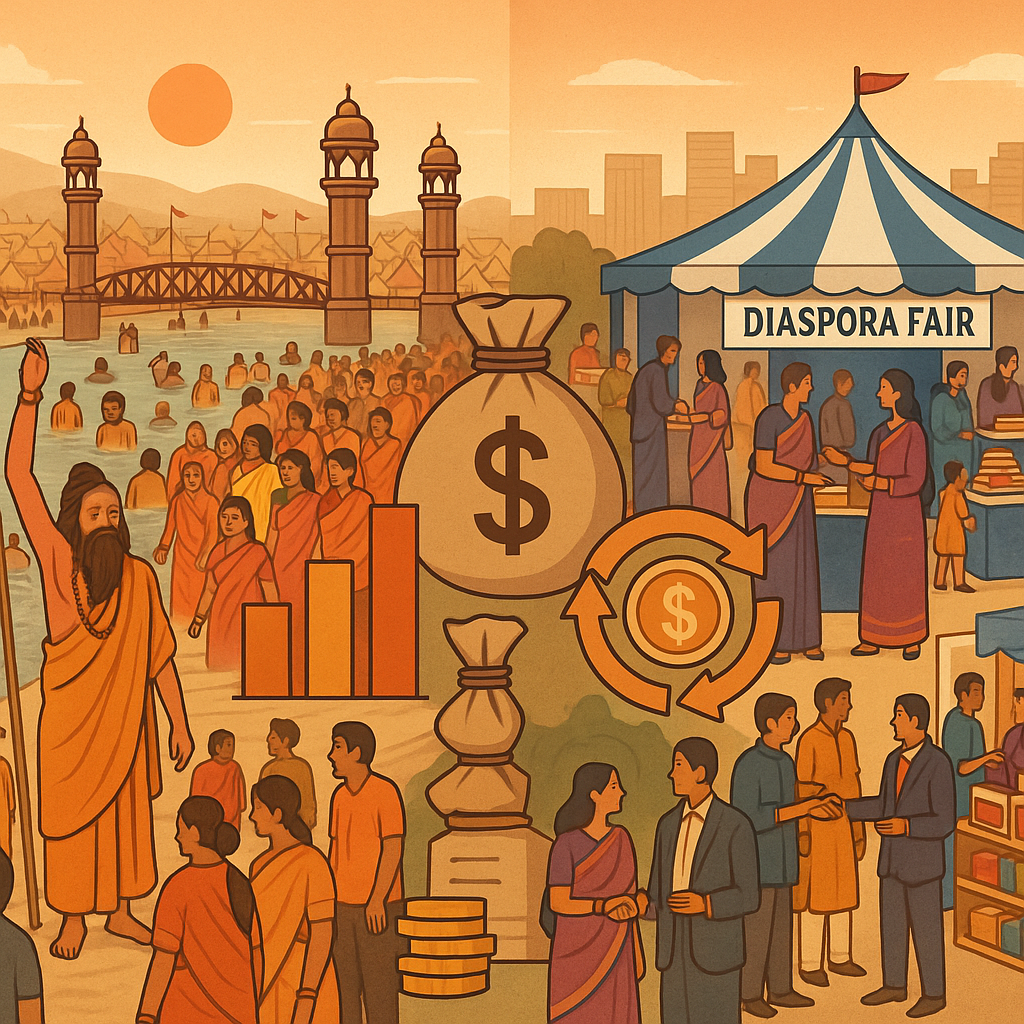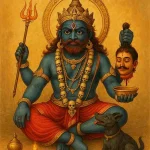The Economy of Mega-Festivals: From Kumbh to Diaspora Fairs
India’s festivals are not just expressions of faith — they are vast economic ecosystems that transform cities, livelihoods, and markets. From the sacred waters of the Kumbh Mela to the grand diaspora fairs in London, New York, and Dubai, religious and cultural gatherings have evolved into powerful engines of growth. The “festival economy” of India and its global diaspora now represents one of the most dynamic intersections of spirituality, tourism, commerce, and creativity in the 21st century.
In 2025, this economy is no longer confined to temples and pilgrim towns. It has become a multi-billion-rupee network spanning hospitality, retail, media, logistics, and even technology sectors — creating jobs, driving tourism, and shaping global cultural diplomacy.
Kumbh Mela: The Original Mega-Economy
Few events illustrate this better than the Kumbh Mela, the largest congregation of humanity on Earth. Traditionally a pilgrimage of purification and devotion, the Kumbh has become a model of temporary urban planning and economic mobilization. According to government estimates from previous editions, the Kumbh generates thousands of crores in revenue — from accommodation, food stalls, and transport to local crafts and souvenirs. Millions of pilgrims, sadhus, and tourists create a demand chain that sustains small businesses and boosts the regional economy for months.
Behind the spiritual spectacle lies meticulous planning — sanitation, digital crowd control, security, and temporary housing — that rivals the infrastructure of a medium-sized city. For local communities, it means employment opportunities, micro-entrepreneurship, and exposure to global visitors.
Yet, beyond numbers, the Kumbh represents something deeper: how faith-based gatherings can co-exist with modern governance and contribute meaningfully to inclusive growth.
Temple Towns and Religious Tourism
Across India, temple towns like Varanasi, Tirupati, Puri, and Madurai have become year-round centers of economic activity. Each draws millions of devotees and pilgrims, stimulating local crafts, transport networks, and the hospitality industry.
In 2025, religious tourism is one of India’s fastest-growing sectors. New infrastructure projects — including heritage corridors, improved rail connectivity, and eco-friendly lodging — are reshaping how pilgrims travel. The integration of digital tools such as virtual tours, online donations, and e-darshan apps has further expanded participation beyond physical boundaries. Religious institutions themselves have evolved into cultural brands, with temples collaborating on handloom fairs, food festivals, and art exhibitions. This blending of devotion and entrepreneurship reflects a distinctly Indian way of balancing the sacred and the secular.
Diaspora Fairs: Faith Across Borders
Beyond India’s borders, diaspora festivals have become important social and economic events, connecting migrant communities with their roots. In cities like London, Toronto, and Sydney, fairs such as “India Day,” “Diwali in the Square,” and “Navratri Utsav” attract tens of thousands of participants annually. These gatherings are more than nostalgia; they are expressions of cultural diplomacy. They generate revenue through ticket sales, sponsorships, and merchandise, while strengthening India’s soft power abroad. For local governments, such events promote multiculturalism; for Indian entrepreneurs, they open doors to export opportunities in food, fashion, and traditional arts.
In 2025, diaspora fairs are being reimagined with technology — live-streamed concerts, virtual aartis, and global marketplaces for artisans. They serve as both spiritual homes and business platforms for a globally connected Indian community.
The Digital Turn: Virtual Devotion and Online Markets
The digital transformation of mega-festivals has created a new parallel economy. From online pujas during lockdowns to hybrid events that mix physical and virtual participation, the faith economy now thrives in the digital realm. Platforms offering virtual temple tours, live-streamed kirtans, and online prasad delivery are generating significant business. E-commerce portals dedicated to devotional items, eco-friendly idols, and traditional clothing see massive spikes during festive seasons.
Social media, too, plays a critical role. Influencers and temple authorities use digital storytelling to promote rituals, attract tourists, and raise funds for heritage preservation. This virtual engagement not only fuels commerce but also democratizes access to spirituality for those who cannot travel.
Challenges: Sustainability and Commercial Balance
Yet, the rapid commercialization of faith raises important questions. How can the sacred retain its meaning when surrounded by profit motives? Overcrowding, waste generation, and environmental stress often accompany mega-festivals. For example, during major pilgrimages, rivers and cities face significant ecological strain. The challenge lies in ensuring that economic gain does not overshadow spiritual purpose. Sustainable planning, waste management, and green infrastructure must be integral to festival management. Moreover, local communities — often the custodians of tradition — must be equal beneficiaries in the revenue chain.
Balancing devotion with discipline will determine whether these festivals continue to serve both the divine and the development agenda.
Opportunities Ahead: A New Model of Cultural Economy
As India’s influence grows globally, its festivals are emerging as cultural ambassadors. Government initiatives like Dekho Apna Desh and the PRASAD Scheme are aligning tourism development with heritage preservation. Private players are investing in heritage resorts, craft villages, and festival-linked start-ups.
In the diaspora, partnerships between Indian missions, cultural councils, and local organizers are helping scale these events to international standards. This trend transforms festivals into platforms of global dialogue — where spirituality meets sustainability and faith meets entrepreneurship.
Celebrating with Purpose
From the sacred ghats of Prayagraj to the festive streets of London, mega-festivals embody the Indian ability to celebrate faith with purpose. They are living laboratories of how culture can generate economic energy while nurturing human connection.
The economy of festivals is not just about numbers — it is about narratives: of belonging, resilience, and renewal. As India steps further into the digital and global age, these festivals remind the world that economics and spirituality, far from being opposites, can together illuminate the path toward inclusive and sustainable prosperity.
~Religion World Bureau









